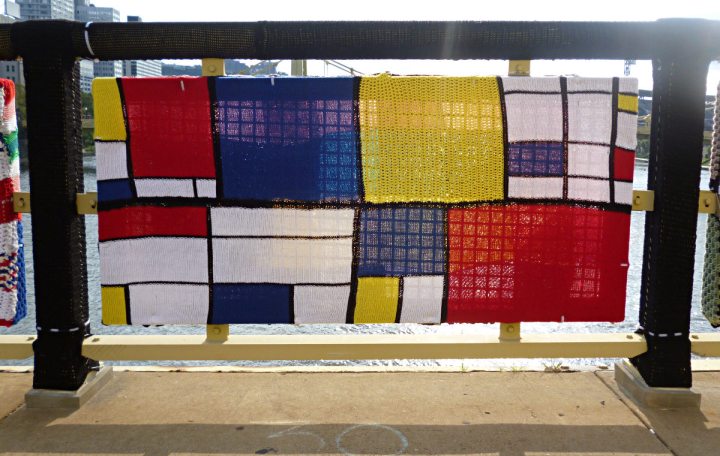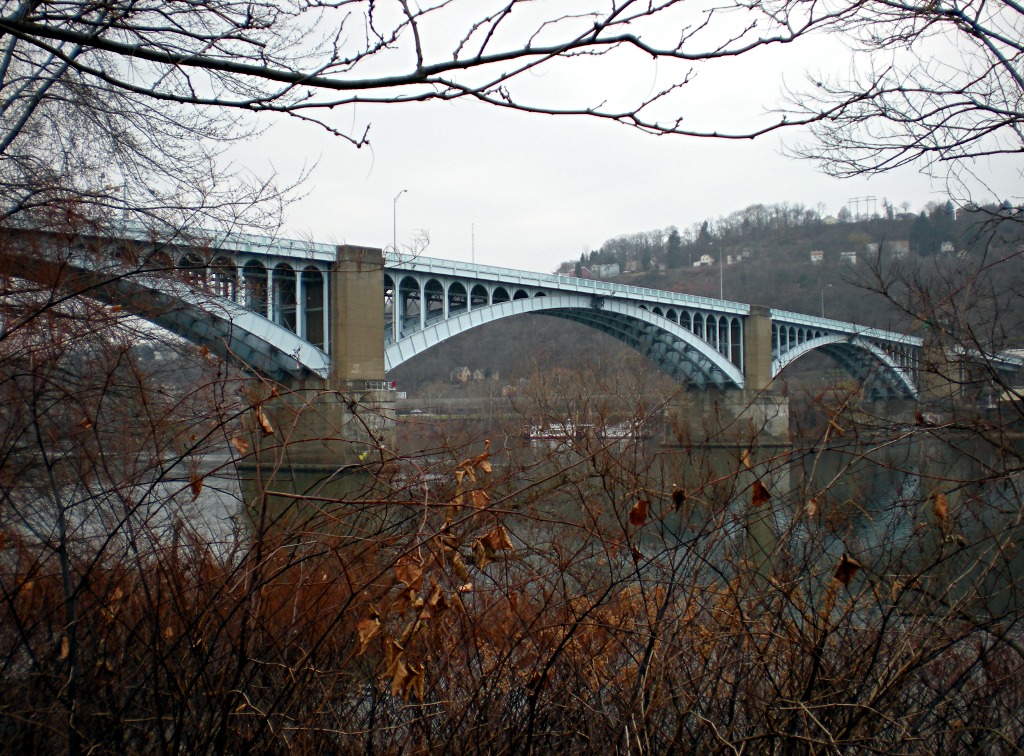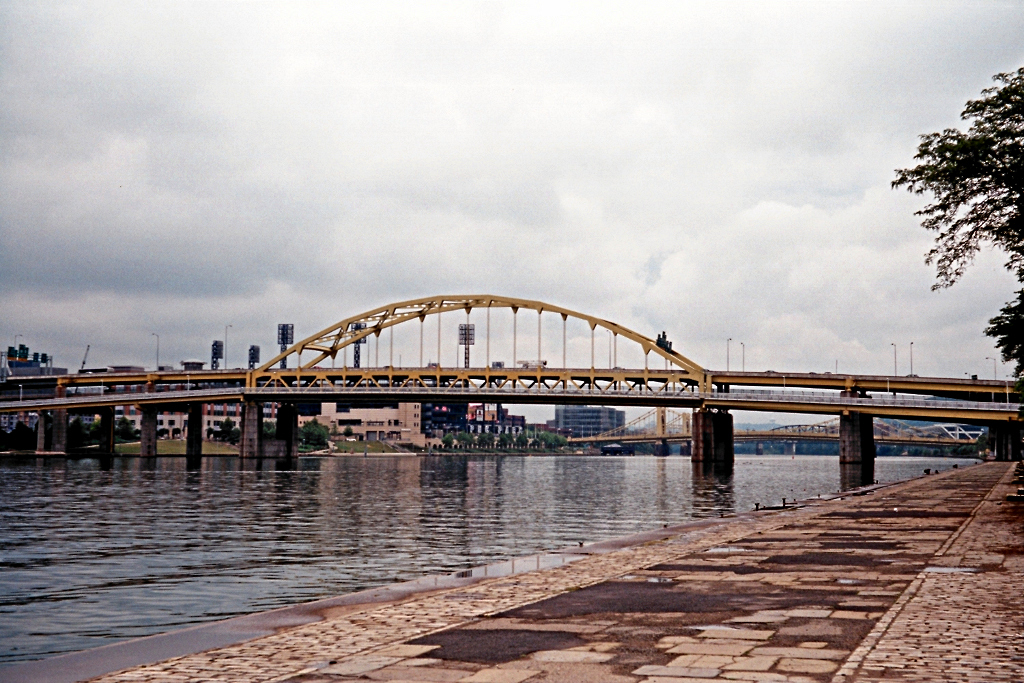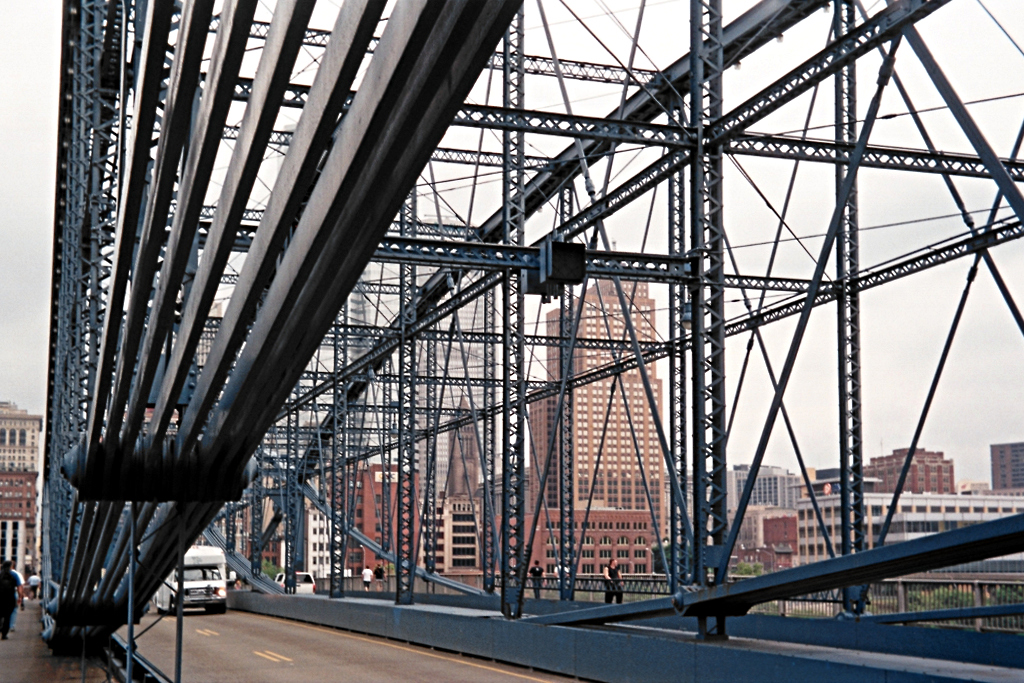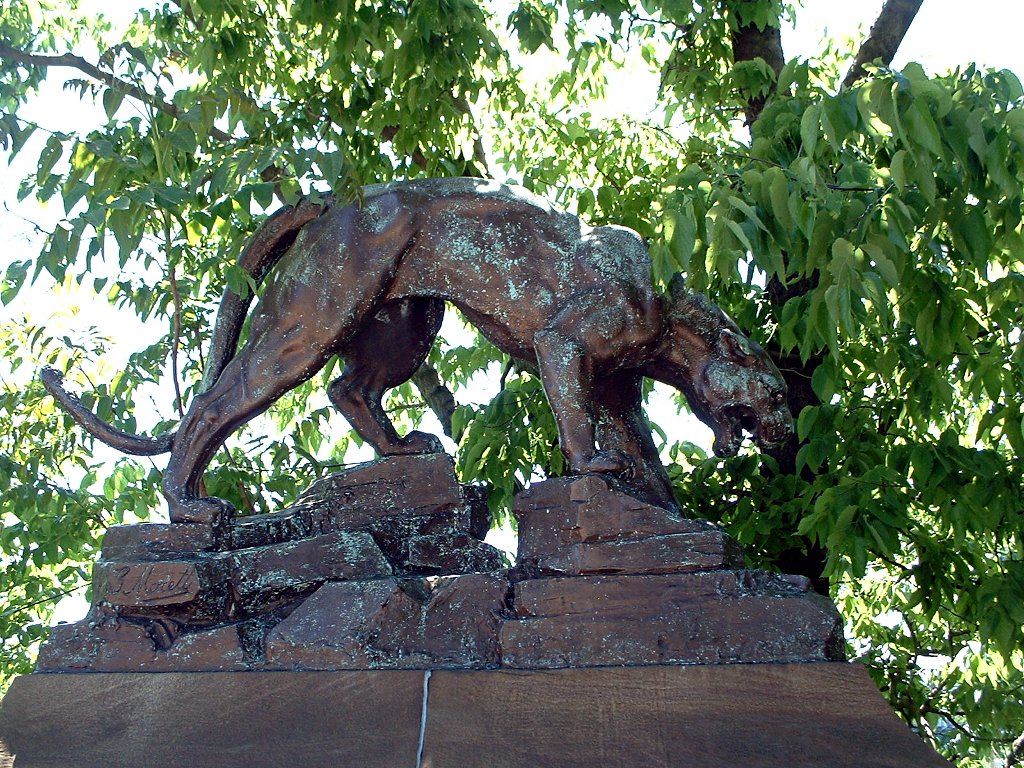The Seventh Street or Andy Warhol Bridge is covered with knitting—supposedly the biggest “yarn-bombing” project in history. If terrorism were always so cheerful, old Pa Pitt would be completely in favor of it.
As a secret fan of De Stijl, old Pa Pitt was particularly taken with this piece.
The “Knit the Bridge” project has generated quite a bit of news coverage across the country:





